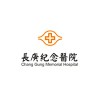
Effects of Whole Body Vibration in Subacute Stroke Patients
StrokeThe overall aim of the proposed study is to determine whether whole body vibration is beneficial in promoting bone turnover, physical fitness and neuromotor performance in patients with subacute stroke.

Neuroregeneration Enhanced by Transcranial Direct Current Stimulation (TDCS) in Stroke
StrokeTesting the hypothesis that non-invasive brain stimulation by transcranial direct current stimulation (tDCS) combined with functional training in the subacute phase of first-ever stroke will enhance functional regeneration compared with a Placebo intervention.

Testing Adaptive Physical Activity in Stroke
Stroke"Testing Adaptive Physical Activity in Stroke" tests the idea that adaptive physical activity (APA) will improve fitness, balance and walking function, daily step activity, and outcomes related to quality of life in individuals with chronic stroke. Adaptive physical activity is an exercise model that combines aerobic exercise with balance and gait training in a socially reinforcing group setting. Individualized homework assignments encourage integration of exercise into daily life routines. Our specific aims are: to determine whether APA improves cardiovascular fitness and metabolic health to measure the effects of APA on gait and balance, ambulatory activity, and ADL function to determine whether APA affects self-reported outcomes related to self-efficacy, fatigue, and stroke-specific quality of life

Validation of Velocity Curvature Index as a Diagnostic Biomarker Tool for Assessment of Large Vessel...
StrokeAcute Ischemic StrokeThis study is a multi-center, multi-phase, multi-cohort, prospective, randomized, open, blinded endpoint (PROBE), non-significant risk (NSR) device study including up to 420 evaluable subjects measured with the study device(s) and up to 40 non-evaluable subjects for the training phase.

Training Dual-task Balance and Walking in People With Stroke
StrokeStroke is one of the most common chronic disabling conditions in Hong Kong. People after stroke may suffer from certain degree of physical impairment and disability. Resuming safe ambulation in the community appears to be a big challenge to them as it always involves the simultaneous performance of two or more tasks (dual task) such as walking and talking with someone, walking and recalling the shopping list etc. Numerous studies has demonstrated that the interference from dual tasks (dual task interference) may significantly impact the recovery of the functional walking. To date, the relevance of dual task walking to daily community is widely documented and the ability of managing dual task is therefore particularly important. Evidences supported that dual task training showed its promising effect on the balance and walking performance amongst people with neurological disorders, such as chronic stroke. In light of this, the introduction of dual task based balance and walking training into physiotherapy program for stroke patient may enhance the balance and walking performance and hence promote successful community ambulation. Yet, there is limited evidence on its effect in sub-acute stroke. Objective: To examine the effectiveness of a dual-task based balance and walking training program on performance and dual task interference in balance and walking ability, balance self-efficacy and incidence of falls in people with sub-acute stroke

Botulinim Toxin Type A Injections by Different Guidance in Stroke Patients With Spasticity on Lower...
Cerebrovascular AccidentStroke may result in lower extremity spasticity, which interfere with motor voluntary function and activities of daily living. Botulinum toxin type A (BTX-A) has been shown to improve lower extremity spasticity of stroke patients. There are no researches to compare the efficiency of BTX-A injection by different guidance methods in the deep muscles of lower extremity for stroke patients. The aims of investigator's study were to compare the effectiveness of BTX-A injection by different guidance methods (palpation of anatomical landmarks, ultrasonography direct) in deep spastic muscles of lower extremity for stroke patients with varus spasticity and spastic claw toes , and to study the correlation between muscles spasticity and elastic properties by the sonoelastography/acoustic radiation force impulse imaging and follow the change of elastic properties in spastic muscles after BTX-A injection. We will enroll 80 hemiplegic stroke patients with varus spasticity / spastic claw toes and duration more than 6 months. Under different guidance methods (palpation of anatomical landmarks, electric stimulation, ultrasonography direct and indirect methods), BTX-A will be injected to the flexor digitorum longus and posterior tibialis muscles. If the patients have moderate hallucis spasticity, flexor hallucis longus muscle will be injected. The BTX-A dose is 50 units for each muscle. Outcome measures include Modified Ashworth Scale, Brunnstrom stage, muscle power, range of motion, the visual analog scale of pain, Stroke Impact Scale, Barthel index and lower extremity function tests, balance test, Goal Attainment Scale, sonoelastography and acoustic radiation force impulse imaging. All the assessments will be performed before BTX-A injection and followed up at 1 months, 2 months, 3 months and 6 months after injection. After performing all the assessments, investigator will investigate the efficiency of BTX-A by different guidance methods.

Cerebrolysin REGistry Study in Stroke
Ischemic StrokeInvestigation of clinical practices, safety and effectiveness of Cerebrolysin in routine treatment of patients with acute ischemic stroke.

A Clinical Trial of Danhong Injection in Treating Acute Ischemic Stroke
StrokeResearch topic. A clinical trial of Danhong injection in treating acute ischemic stroke . Research purpose. - To evaluate the efficacy and safety of Danhong injection in treating acute ischemic stroke by a randomized, double-blind, multi-center, placebo-controlled clinical trial. Research design. - A randomized, double-blind, multi-center, placebo-controlled clinical trial. Subject crowd. - Accord with standard of western medicine diagnosis of acute cerebral infarction, stroke and blood stasis type of traditional Chinese medicine syndrome differentiation. Sample size. - Total sample size of 320 patients, experimental group, control group is equal to 1 to 1. Interim analysis. - Interim analysis will be performed when the total number of included patients up to half of the sample size ,160 cases, and according to the interim analysis results to estimate the sample size and adjust the project adaptively. Course of treatment. - 10 days. Research endpoint. - The 90th day after the medication for the first time. Observation index. General condition; the physical and chemical inspection related; Efficacy check : mRS, BI, NIHSS; Safety check: blood routine, urine routine, stool OB, liver function(ALT、AST), renal function (BUN, Cr), coagulation four indices(PT、APTT、TT、FIB), electrocardiogram. Efficacy evaluation. 1. The main efficacy index: a. Percentage comparisons of two group patients of modified Rankin 0-2 grades on the 90th day. Statistical analysis technique. - Statistical analysis using SAS 9.2 system, all the statistical test adopted bilateral inspection, P value less than or equal to 0.05 will be considered a statistically significant difference.

Botulinum Toxin A for Shoulder Pain After Stroke
StrokePainShoulder pain after stroke is a very common, causing significant morbidity disease. Subacromial and subdeltoid (SASD) bursitis are common causes of pain or disability of the shoulder joint in stroke patients. Traditional therapeutic approaches for the shoulder pain therapy including pharmacotherapy, injection therapy, physical therapy, and behavioural modification. Unfortunately, these therapy methods may not be effective in many patients and long term benefit after treatment is transient, the outcomes may also be incomplete or non-existent. Botulinum toxin A (BoNT-A) is a neurotoxin that can inhibit not only the acetylcholine at the neuromuscular junctions but also other neurotransmitters such as glutamate, substance P and calcitonin gene related peptide, all of which have been indicated in pain transmission. Despite the therapeutic benefit of BTX in alleviating painful muscle spasms, its efficacy in SASD bursitis conditions is less clear. So we perform this study to examine the efficacy of ultrasound guided SASD injection with BoNT-A in reducing refractory shoulder pain after stroke.

Ketamine for Thrombolysis in Acute Ischemic Stroke
StrokeKETA trial is a nonprofit, double-blind, randomized, controlled pilot trial with aiming to determine if co-administration of ketamine with recombinant of tissue type plasminogen activator (tPA) for thrombolysis in acute ischemic stroke compared with tPA co-administered with placebo, decreases cerebral infarction growth in diffusion weighted imaging between admission and day 1. Eligibility applies to patients with symptomatic ischemic stroke seen within 4.5 h of onset with middle cerebral artery or distal internal carotid artery occlusion, no contraindication to intravenous tPA-mediated thrombolysis and eligible to endovascular treatment of stroke (i.e. thrombectomy). The study has been designed to have 80% power to detect a 80% decrease of infarct volume growth in the tPA-ketamine group at a two-sided type I error rate of 5%. For this purpose, at least 25 patients per arm should be enrolled.
